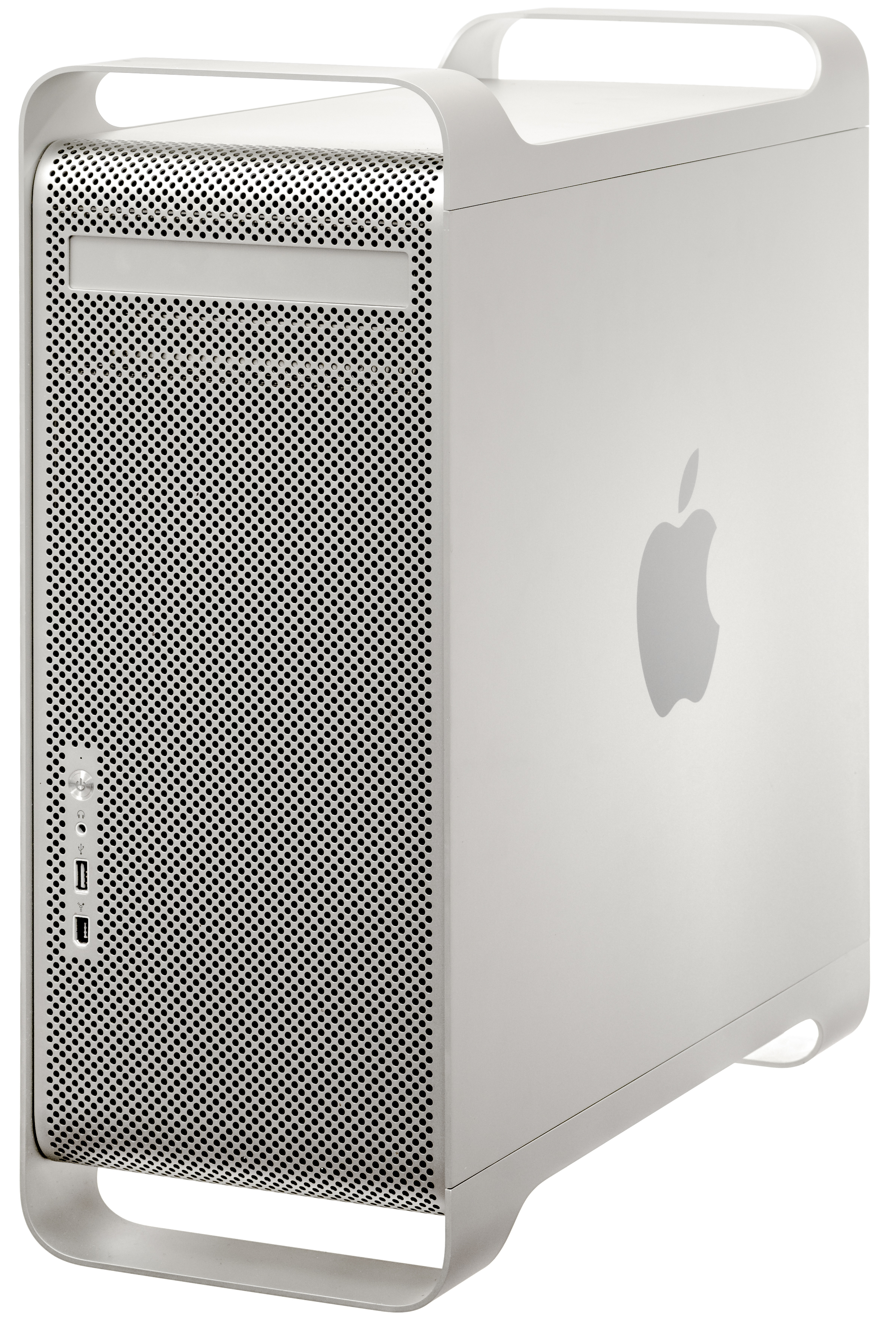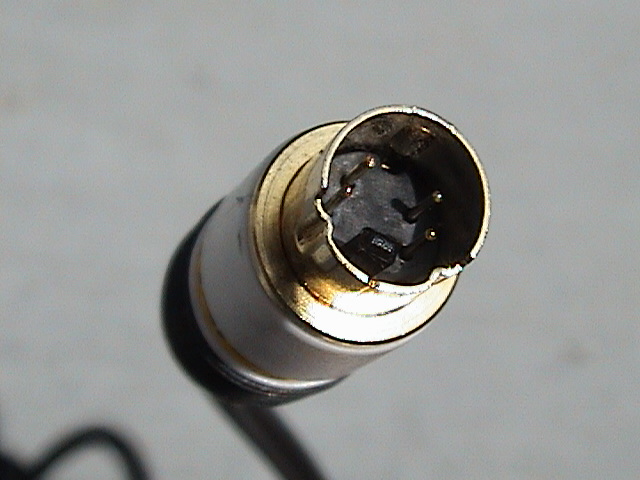|
Power Macintosh 5500
The Power Macintosh 5500 is a personal computer designed, manufactured, and sold by Apple Computer from February 1997 to March 1998. Like the Power Macintosh 5260 and 5400 that preceded it, the 5500 is an all-in-one design, built around a PowerPC 603ev processor operating at 225, 250 or 275 megahertz (MHz). Apple originally produced the Power Macintosh 5500 for the educational market as a replacement for the previous year's Power Macintosh 5400. It is the last All-In-One from Apple to be housed in the Power Macintosh 5200 LC's form-factor; its replacement, the Power Macintosh G3 All-In-One, introduced a significantly different design. Hardware The 225 and 250 MHz models were produced in beige and black, whilst the rarer 275 MHz models were only black. External ports: External ports include two LocalTalk/GeoPort serial ports, a DB-25 SCSI port, an ADB port, a stereo sound input port, a built-in microphone above the monitor, stereophonic sound output ports, ... [...More Info...] [...Related Items...] OR: [Wikipedia] [Google] [Baidu] |
Power Macintosh
The Power Macintosh, later Power Mac, is a family of personal computers designed, manufactured, and sold by Apple Computer as the core of the Macintosh brand from March 1994 until August 2006. Described by ''MacWorld'' as "the most important technical evolution of the Macintosh since the Mac II debuted in 1987", it is the first computer with the PowerPC CPU architecture, the flagship product of the AIM alliance. Existing software for the Motorola 68k processors of previous Macintoshes do not run on it natively, so a Mac 68k emulator is in System 7.1.2. It provides good compatibility, at about two thirds of the speed of contemporary Macintosh Quadra machines. The Power Macintosh replaced the Quadra, and was initially sold in the same enclosures. Over the next twelve years, it evolved through a succession of enclosure designs, a rename to "Power Mac", five major generations of PowerPC chips, and a great deal of press coverage, design accolades, and controversy about performance cl ... [...More Info...] [...Related Items...] OR: [Wikipedia] [Google] [Baidu] |
DB-25
The D-subminiature or D-sub is a common type of electrical connector. They are named for their characteristic D-shaped metal shield. When they were introduced, D-subs were among the smallest connectors used on computer systems. Description, nomenclature, and variants A D-sub contains two or more parallel rows of pins or sockets usually surrounded by a D-shaped metal shield that provides mechanical support, ensures correct orientation, and may screen against electromagnetic interference. D-sub connectors have Gender of connectors and fasteners, gender: parts with pin contacts are called ''male connectors'' or ''plugs'', while those with socket contacts are called ''female connectors'' or ''sockets''. The socket's shield fits tightly inside the plug's shield. Panel mounted connectors usually have #4-40 UNC (as designated with the Unified Thread Standard) Jackscrew#In_electronic_connectors, jackscrews that accept screws on the cable end connector cover that are used for locking ... [...More Info...] [...Related Items...] OR: [Wikipedia] [Google] [Baidu] |
Australasia
Australasia is a region that comprises Australia, New Zealand and some neighbouring islands in the Pacific Ocean. The term is used in a number of different contexts, including geopolitically, physiogeographically, philologically, and ecologically, where the term covers several slightly different, but related regions. Derivation and definitions Charles de Brosses coined the term (as French ''Australasie'') in ''Histoire des navigations aux terres australes'' (1756). He derived it from the Latin for "south of Asia" and differentiated the area from Polynesia (to the east) and the southeast Pacific (Magellanica). In the late 19th century, the term Australasia was used in reference to the "Australasian colonies". In this sense it related specifically to the British colonies south of Asia: New South Wales, Queensland, South Australia, Tasmania, Western Australia, Victoria (i.e., the Australian colonies) and New Zealand. Australasia found continued geopolitical attention in the earl ... [...More Info...] [...Related Items...] OR: [Wikipedia] [Google] [Baidu] |
North America
North America is a continent in the Northern Hemisphere and almost entirely within the Western Hemisphere. It is bordered to the north by the Arctic Ocean, to the east by the Atlantic Ocean, to the southeast by South America and the Caribbean Sea, and to the west and south by the Pacific Ocean. Because it is on the North American Plate, North American Tectonic Plate, Greenland is included as a part of North America geographically. North America covers an area of about , about 16.5% of Earth's land area and about 4.8% of its total surface. North America is the third-largest continent by area, following Asia and Africa, and the list of continents and continental subregions by population, fourth by population after Asia, Africa, and Europe. In 2013, its population was estimated at nearly 579 million people in List of sovereign states and dependent territories in North America, 23 independent states, or about 7.5% of the world's population. In Americas (terminology)#Human ge ... [...More Info...] [...Related Items...] OR: [Wikipedia] [Google] [Baidu] |
Philips
Koninklijke Philips N.V. (), commonly shortened to Philips, is a Dutch multinational conglomerate corporation that was founded in Eindhoven in 1891. Since 1997, it has been mostly headquartered in Amsterdam, though the Benelux headquarters is still in Eindhoven. Philips was formerly one of the largest electronics companies in the world, but is currently focused on the area of health technology, having divested its other divisions. The company was founded in 1891 by Gerard Philips and his father Frederik, with their first products being light bulbs. It currently employs around 80,000 people across 100 countries. The company gained its royal honorary title (hence the ''Koninklijke'') in 1998 and dropped the "Electronics" in its name in 2013, due to its refocusing from consumer electronics to healthcare technology. Philips is organized into three main divisions: Personal Health (formerly Philips Consumer Electronics and Philips Domestic Appliances and Personal Care), Connecte ... [...More Info...] [...Related Items...] OR: [Wikipedia] [Google] [Baidu] |
S-Video
S-Video (also known as separate video, Y/C, and erroneously Super-Video ) is an analog video signal format that carries standard-definition video, typically at 525 lines or 625 lines. It encodes video luma and chrominance on two separate channels, achieving higher image quality than composite video which encodes all video information on one channel. It also eliminates several types of visual defects such as dot crawl which commonly occur with composite video. Although it improved over composite video, S-Video has lower color resolution than component video, which is encoded over three channels. The Atari 800 was the first to introduce separate Chroma/Luma output in late 1979. However, S-Video did not get widely adopted until JVC's introduction of the S-VHS (Super-VHS) format in 1987, which is why it is sometimes incorrectly referred to as "Super-Video." Before the shift towards digital video the S-video format was widely used by consumers, but it was rarely used in professiona ... [...More Info...] [...Related Items...] OR: [Wikipedia] [Google] [Baidu] |
DB-15
The D-subminiature or D-sub is a common type of electrical connector. They are named for their characteristic D-shaped metal shield. When they were introduced, D-subs were among the smallest connectors used on computer systems. Description, nomenclature, and variants A D-sub contains two or more parallel rows of pins or sockets usually surrounded by a D-shaped metal shield that provides mechanical support, ensures correct orientation, and may screen against electromagnetic interference. D-sub connectors have gender: parts with pin contacts are called ''male connectors'' or ''plugs'', while those with socket contacts are called ''female connectors'' or ''sockets''. The socket's shield fits tightly inside the plug's shield. Panel mounted connectors usually have #4-40 UNC (as designated with the Unified Thread Standard) jackscrews that accept screws on the cable end connector cover that are used for locking the connectors together and offering mechanical strain relief, and can ... [...More Info...] [...Related Items...] OR: [Wikipedia] [Google] [Baidu] |
Megabyte
The megabyte is a multiple of the unit byte for digital information. Its recommended unit symbol is MB. The unit prefix ''mega'' is a multiplier of (106) in the International System of Units (SI). Therefore, one megabyte is one million bytes of information. This definition has been incorporated into the International System of Quantities. In the computer and information technology fields, other definitions have been used that arose for historical reasons of convenience. A common usage has been to designate one megabyte as (220 B), a quantity that conveniently expresses the binary architecture of digital computer memory. The standards bodies have deprecated this usage of the megabyte in favor of a new set of binary prefixes, in which this quantity is designated by the unit mebibyte (MiB). Definitions The unit megabyte is commonly used for 10002 (one million) bytes or 10242 bytes. The interpretation of using base 1024 originated as technical jargon for the byte SI prefix, mult ... [...More Info...] [...Related Items...] OR: [Wikipedia] [Google] [Baidu] |
Gigabyte
The gigabyte () is a multiple of the unit byte for digital information. The prefix ''giga'' means 109 in the International System of Units (SI). Therefore, one gigabyte is one billion bytes. The unit symbol for the gigabyte is GB. This definition is used in all contexts of science (especially data science), engineering, business, and many areas of computing, including storage capacities of hard drives, solid state drives, and tapes, as well as data transmission speeds. However, the term is also used in some fields of computer science and information technology to denote (10243 or 230) bytes, particularly for sizes of RAM. Thus, prior to 1998, some usage of ''gigabyte'' has been ambiguous. To resolve this difficulty, IEC 80000-13 clarifies that a ''gigabyte'' (GB) is 109 bytes and specifies the term ''gibibyte'' (GiB) to denote 230 bytes. These differences are still readily seen for example, when a 400 GB drive's capacity is displayed by Microsoft Windows as 372 G ... [...More Info...] [...Related Items...] OR: [Wikipedia] [Google] [Baidu] |
AT Attachment
Parallel ATA (PATA), originally , also known as IDE, is a standard interface designed for IBM PC-compatible computers. It was first developed by Western Digital and Compaq in 1986 for compatible hard drives and CD or DVD drives. The connection is used for storage devices such as hard disk drives, floppy disk drives, and optical disc drives in computers. The standard is maintained by the X3/INCITS committee. It uses the underlying (ATA) and Packet Interface ( ATAPI) standards. The Parallel ATA standard is the result of a long history of incremental technical development, which began with the original AT Attachment interface, developed for use in early PC AT equipment. The ATA interface itself evolved in several stages from Western Digital's original Integrated Drive Electronics (IDE) interface. As a result, many near-synonyms for ATA/ATAPI and its previous incarnations are still in common informal use, in particular Extended IDE (EIDE) and Ultra ATA (UATA). After the intr ... [...More Info...] [...Related Items...] OR: [Wikipedia] [Google] [Baidu] |
CPU Cache
A CPU cache is a hardware cache used by the central processing unit (CPU) of a computer to reduce the average cost (time or energy) to access data from the main memory. A cache is a smaller, faster memory, located closer to a processor core, which stores copies of the data from frequently used main memory locations. Most CPUs have a hierarchy of multiple cache levels (L1, L2, often L3, and rarely even L4), with different instruction-specific and data-specific caches at level 1. The cache memory is typically implemented with static random-access memory (SRAM), in modern CPUs by far the largest part of them by chip area, but SRAM is not always used for all levels (of I- or D-cache), or even any level, sometimes some latter or all levels are implemented with eDRAM. Other types of caches exist (that are not counted towards the "cache size" of the most important caches mentioned above), such as the translation lookaside buffer (TLB) which is part of the memory management unit (MMU) w ... [...More Info...] [...Related Items...] OR: [Wikipedia] [Google] [Baidu] |


.jpg)





